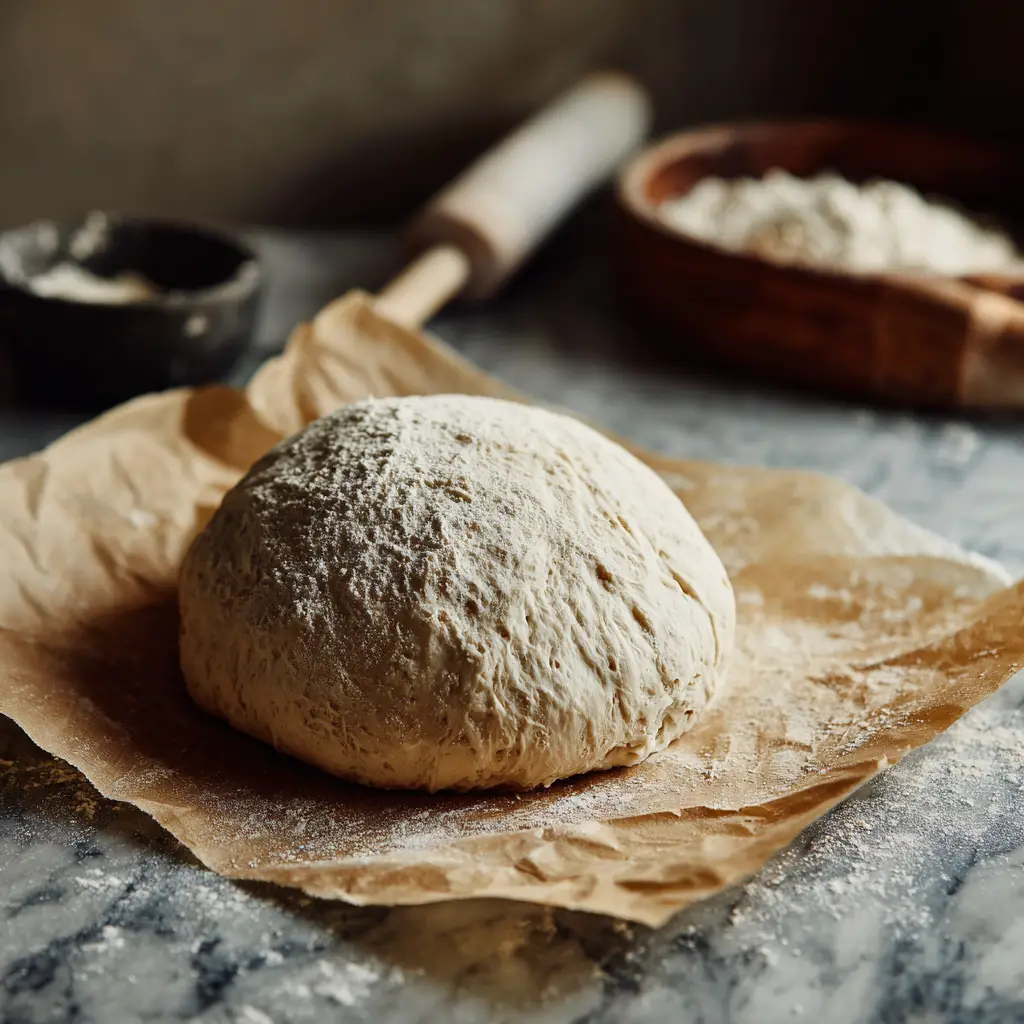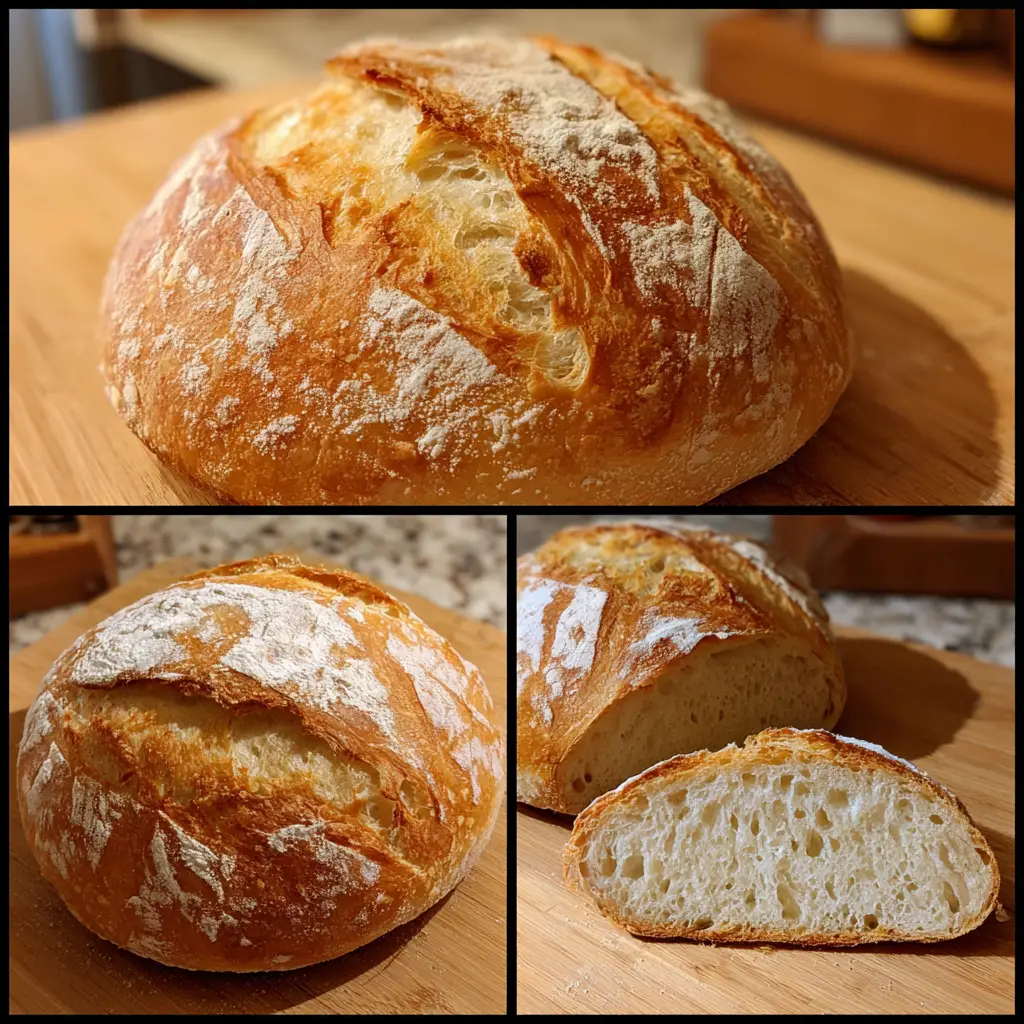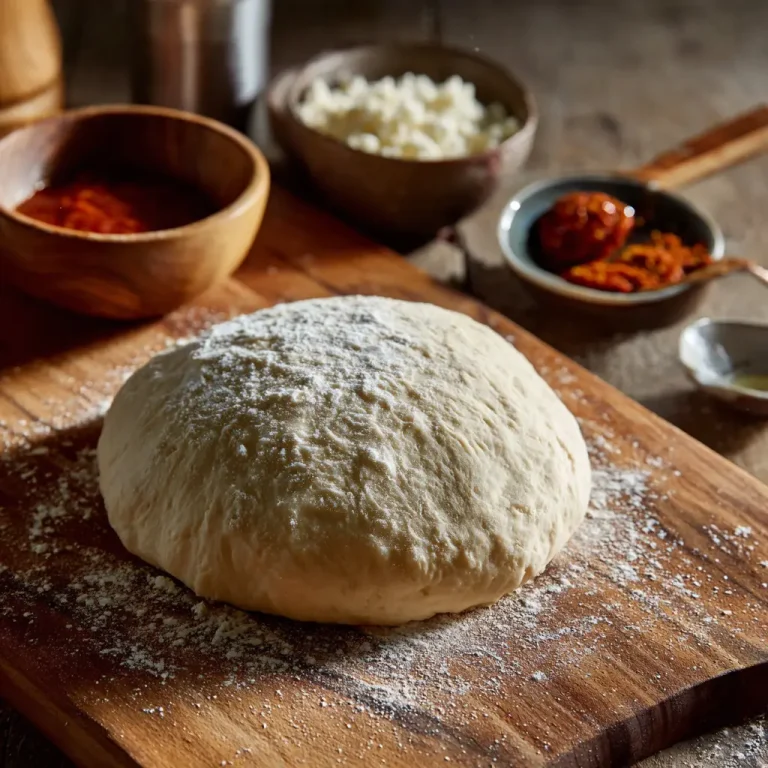Introduction
Sourdough pizza dough brings an incredible depth of flavor and texture that transforms homemade pizza into something truly special. The tangy, complex notes from the sourdough starter combine beautifully with the soft, chewy crumb and crisp crust. Every bite feels authentic and satisfying, reminiscent of artisanal wood-fired pizzas found in the best pizzerias. The natural fermentation process gives the dough its signature taste while also making it easier to digest compared to regular yeast-based doughs. Making sourdough pizza dough may take time, but the results are absolutely worth the effort.
The process of working with sourdough is both creative and rewarding. It encourages patience as the dough slowly develops flavor and structure through fermentation. The beauty of sourdough pizza dough lies in its flexibility — it can be shaped into thin, crisp crusts or soft, pillowy ones depending on your preference. Once baked, the crust develops golden blisters and a delicate crunch while remaining light inside. Homemade sourdough pizza dough not only elevates your pizza nights but also gives you a connection to traditional bread-making that feels both rustic and timeless.
Ingredients Needed

| Ingredient | Quantity | Calories |
|---|---|---|
| Active sourdough starter | ½ cup (120g) | 60 |
| Bread flour | 2 ½ cups (315g) | 1140 |
| Warm water | ¾ cup (180ml) | 0 |
| Olive oil | 2 tablespoons | 240 |
| Salt | 1 ½ teaspoons | 0 |
| Sugar | 1 teaspoon | 15 |
| Cornmeal (for dusting) | 1 tablespoon | 30 |
Step-by-Step Cooking Instructions
Step 1: In a large mixing bowl, combine the active sourdough starter with warm water and mix until it dissolves evenly.
Step 2: Add the flour, sugar, and salt, then mix with a wooden spoon until a rough dough begins to form.
Step 3: Pour in olive oil and continue mixing until the dough starts to come together smoothly.
Step 4: Transfer the dough to a lightly floured surface and knead for about 8 to 10 minutes until elastic and smooth.
Step 5: Shape the dough into a ball and place it in a lightly oiled bowl, covering it loosely with a damp cloth.
Step 6: Let it rise at room temperature for 4 to 6 hours, allowing the natural fermentation to develop flavor and strength.
Step 7: Once doubled in size, transfer the dough to the refrigerator and let it rest overnight for deeper flavor.
Step 8: The next day, remove it from the fridge and let it come to room temperature before shaping.
Step 9: Divide the dough into portions if making multiple pizzas, then stretch or roll it out to your desired thickness.
Step 10: Sprinkle cornmeal on your baking tray or pizza stone, add your favorite toppings, and bake at 475°F (245°C) for 10 to 12 minutes until golden and crisp.
Tips for Customizing the Recipe
Sourdough pizza dough is highly adaptable, allowing you to create the crust that suits your style. For a more open, airy crumb, use higher hydration by slightly increasing the water amount. If you prefer a crispier texture, bake your pizza on a preheated stone or steel. Whole wheat or rye flour can be mixed with bread flour to add nuttiness and a rustic flavor. A touch of garlic powder or dried herbs in the dough infuses extra aroma. If you like tangier dough, extend the fermentation period by another day in the fridge. The key to success lies in maintaining a healthy sourdough starter and handling the dough gently to preserve its structure and airiness.
Nutritional Information
Each serving of sourdough pizza dough contains about 210 calories, offering a balanced mix of carbohydrates and a modest amount of fat from olive oil. The bread flour provides energy while contributing to the chewy texture. Sourdough fermentation enhances digestibility and reduces gluten content, making it easier on the stomach. It also offers trace minerals and beneficial bacteria that support gut health. Compared to conventional doughs, sourdough contains fewer additives and more natural flavor, making it both a wholesome and flavorful base for any pizza topping combination.
Serving Suggestions

Sourdough pizza dough pairs well with a variety of toppings, from the classic Margherita with mozzarella and basil to bold flavors like roasted vegetables or spicy pepperoni. It can also be brushed with olive oil and garlic to create garlic bread or baked plain for flatbreads served with dips. For a more rustic meal, top it with fresh figs, goat cheese, and arugula. You can also use leftover dough to make calzones or breadsticks. Pair your pizza with a crisp salad, a glass of red wine, or chilled lemonade to complete the meal. Whether for a cozy family dinner or a gathering with friends, this dough sets the stage for perfect pizzas every time.
Conclusion
Sourdough pizza dough transforms the simple act of making pizza into a flavorful and rewarding experience. The combination of tangy depth, chewy texture, and crisp crust makes it stand out from any ordinary dough. Working with sourdough connects you to a slower, more thoughtful way of baking that emphasizes quality and taste. Every pizza made from this dough tells a story of patience, care, and tradition. Whether you bake it in a hot oven or over a grill, the results are always impressive and delicious. Once you experience the magic of sourdough pizza dough, you may never return to regular pizza bases again.






